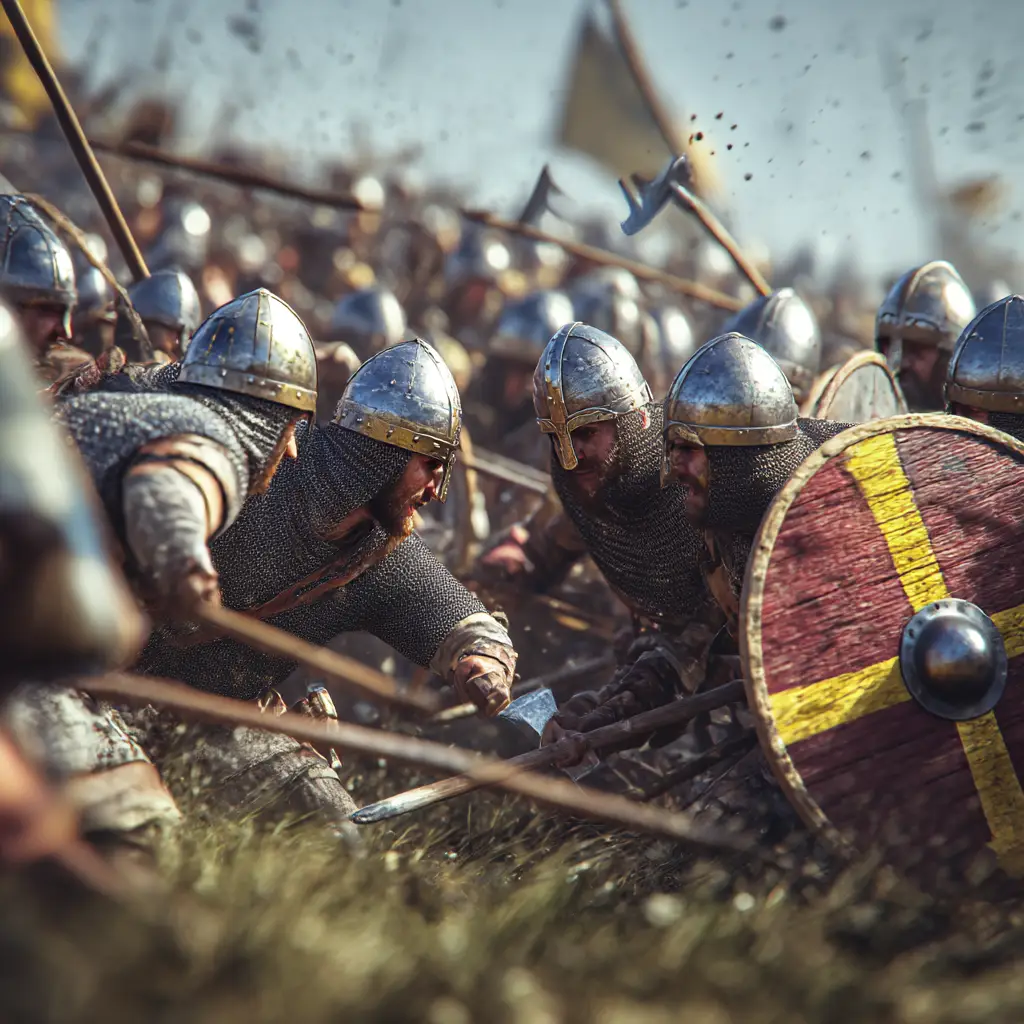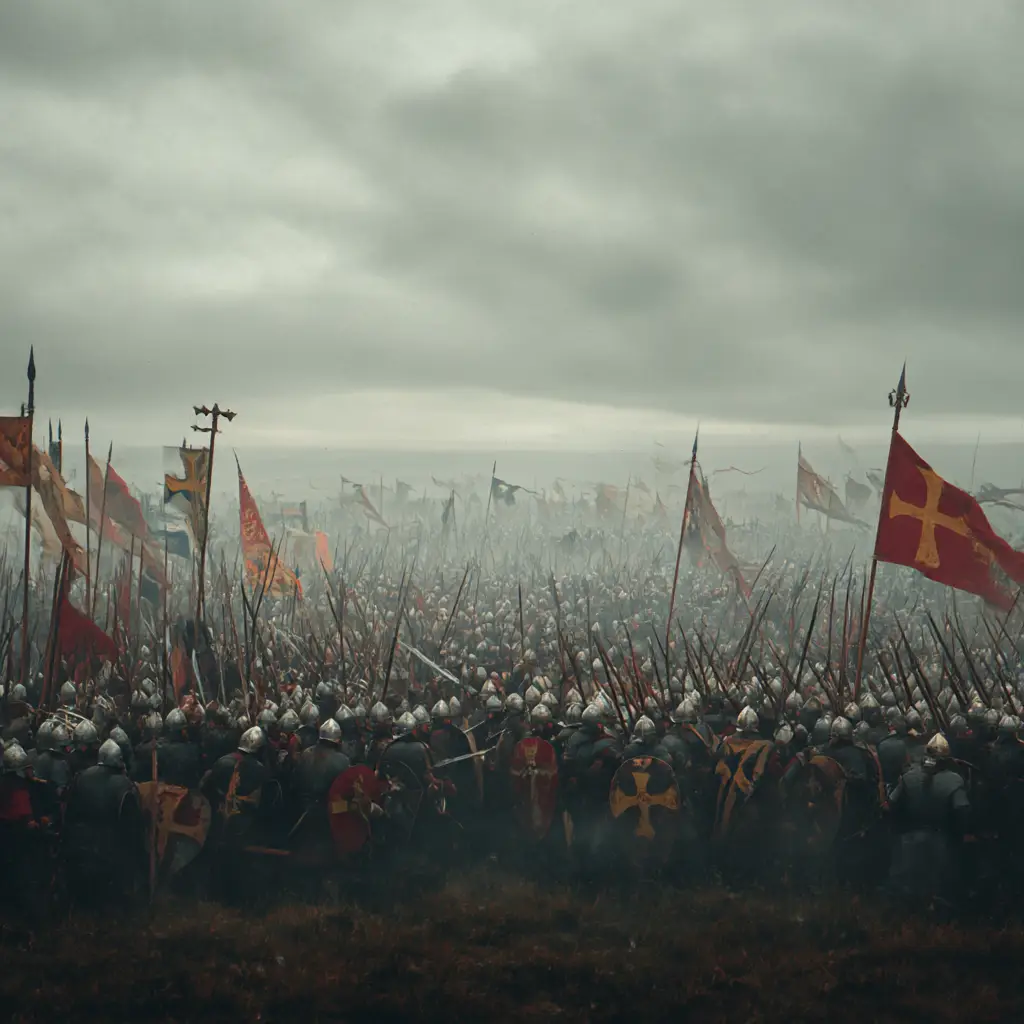The Vikings and the Battle of Stamford Bridge – 1066
The Battle of Stamford Bridge was a pivotal moment in English and Viking history, marking the end of the Viking Age in England. Fought on 25 September 1066, near the village of Stamford Bridge in East Yorkshire, the battle saw the forces of King Harold Godwinson of England face an invading Norwegian army led by King Harald Hardrada, accompanied by Harold’s own estranged brother, Tostig Godwinson.
Background to the Battle of Stamford Bridge
The conflict was rooted in a succession crisis following the death of King Edward the Confessor of England. Multiple claimants vied for the throne, including Harold Godwinson (the powerful Earl of Wessex who was crowned king), William of Normandy, and Harald Hardrada, King of Norway, who based his claim on an earlier agreement between previous monarchs.
Harald Hardrada, one of the most formidable Viking warriors of the age, launched a full-scale invasion of northern England in September 1066. He was joined by Tostig Godwinson, who had been exiled by his brother Harold and sought to reclaim power with the help of the Norwegians.
The Viking Invasion
The Viking fleet, reportedly consisting of around 300 ships and thousands of warriors, landed near the Humber and quickly defeated an English army at the Battle of Fulford on 20 September 1066, just outside York. Following this victory, Hardrada and Tostig received hostages from the city and awaited further reinforcements, believing King Harold was occupied in the south.
However, Harold Godwinson reacted with extraordinary speed, marching his army roughly 185 miles from London to Yorkshire in just four days. This rapid movement caught the Vikings completely off guard.
The Battle Unfolds!
On 25 September, the English army launched a surprise attack on the Norwegians at Stamford Bridge. The Vikings, unarmoured and not expecting battle, had left much of their equipment on their ships. Many were resting or spread out on both sides of the River Derwent.
A key moment of the battle is the stand of a lone Viking warrior on the bridge itself, who reportedly held off the English army single-handedly for some time, allowing his comrades to regroup. According to legend, he was only defeated when an English soldier floated under the bridge in a barrel and speared him from below.
Once across the bridge, the English army overwhelmed the Norwegians. The battle was fiercely fought, but the English forces proved superior, particularly given the unprepared state of the Vikings.
Both Harald Hardrada and Tostig Godwinson were killed in the fighting. The Norwegian army was all but destroyed. Of the original fleet of 300 ships, only around 24 were needed to carry the survivors back to Norway.
The Aftermath of the Battle
The Battle of Stamford Bridge effectively ended the Viking threat to England. It marked the last major incursion by Scandinavian forces, and Harald Hardrada is often seen as the final great Viking king.
However, Harold Godwinson’s triumph was short-lived. Just days later, William of Normandy landed on the south coast. Harold was forced to march his already battle-worn army south to face the Normans at the Battle of Hastings on 14 October 1066 – a battle he would lose, changing the course of English history forever.
The Battle of Stamford Bridge stands as a dramatic final chapter in the Viking saga in England. It showcased the enduring ambition of the Norse kings and their legacy of exploration, warfare, and kingship. While the Vikings had once ruled large parts of England under the Danelaw, this defeat marked the collapse of their political ambitions in the British Isles.
Today, the site of the battle is commemorated in the village of Stamford Bridge, with plaques and historical markers honouring the significance of the clash. It remains a moment of both triumph and tragedy – a final act in the Viking story on English soil.



